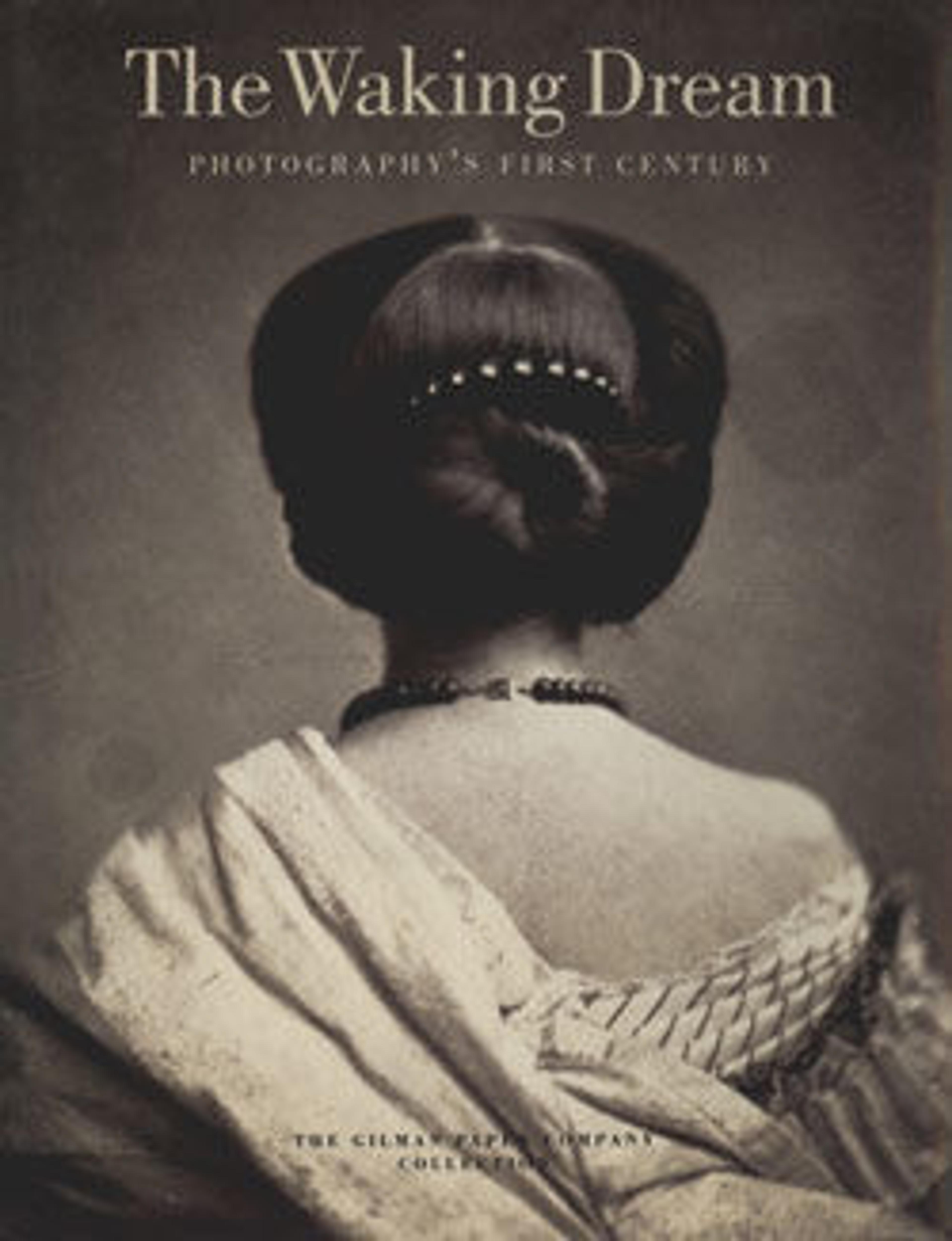Westernmost Colossus of the Temple of Re, Abu Simbel
Maxime Du Camp's mission to Egypt and the Near East in 1849-51 to make a photographic survey of monuments and sites is well documented in his writings and in those of his fellow traveler, Gustave Flaubert. After an initial stay in Cairo, the two friends hired a boat to take them up the Nile as far as the second cataract, after which they descended the river at leisure, exploring the archaeological sites along its banks. In July 1850 they left Egypt for Palestine, Turkey, and Greece before they parted in Italy the following April. Du Camp's album "Egypte, Nubie, Palestine et Syrie," published in 1852 and containing 125 photographs printed by Blanquart-Evrard, brought its author instant fame. In addition to the published edition, Du Camp arranged for a private printing of a few portfolios, such as the one in the Gilman collection, which numbers 174 images particularly noteworthy for their warm color and luminescence. Possibly printed in Gustave Le Gray's studio, the present portfolio is thought to have been in the collection of the architect Eugène Viollet-le-Duc.
A journalist with no experience in photography, Du Camp learned the craft from Le Gray shortly before his departure for Egypt. By the time he came to Abu Simbel in March 1850 to explore the rock-cut temples built by Ramesses II (reigned 1292-1225 b.c.), Du Camp was thoroughly at ease with the medium. Always in search of a neat, documentary clarity, he preferred a frontal view and midday light. For this picture of one of the colossal effigies of Ramesses II (plate 49 in the portfolio), he had the lower portion of the face unearthed and his assistant climb atop the crown to indicate scale. By coincidence, on March 29, the day the energetic Du Camp made this image unabashedly saluting the tourist with his camera as the new ruler of the land, the more reflective Flaubert voiced in his diary his irritation at being cast in such a role: "The Egyptian temples bore me profoundly. Are they going to become like the churches in Brittany, the waterfalls in the Pyrenees? Oh necessity! To do what you are supposed to do; to be always, according to the circumstances . . . what a young man, or a tourist, or an artist . . . is supposed to be!"
A journalist with no experience in photography, Du Camp learned the craft from Le Gray shortly before his departure for Egypt. By the time he came to Abu Simbel in March 1850 to explore the rock-cut temples built by Ramesses II (reigned 1292-1225 b.c.), Du Camp was thoroughly at ease with the medium. Always in search of a neat, documentary clarity, he preferred a frontal view and midday light. For this picture of one of the colossal effigies of Ramesses II (plate 49 in the portfolio), he had the lower portion of the face unearthed and his assistant climb atop the crown to indicate scale. By coincidence, on March 29, the day the energetic Du Camp made this image unabashedly saluting the tourist with his camera as the new ruler of the land, the more reflective Flaubert voiced in his diary his irritation at being cast in such a role: "The Egyptian temples bore me profoundly. Are they going to become like the churches in Brittany, the waterfalls in the Pyrenees? Oh necessity! To do what you are supposed to do; to be always, according to the circumstances . . . what a young man, or a tourist, or an artist . . . is supposed to be!"
Artwork Details
- Title: Westernmost Colossus of the Temple of Re, Abu Simbel
- Artist: Maxime Du Camp (French, 1822–1894)
- Date: 1850
- Medium: Salted paper print from paper negative
- Dimensions: Image: 9 in. × 6 1/2 in. (22.8 × 16.5 cm)
Mount: 18 11/16 × 12 5/16 in. (47.5 × 31.2 cm) - Classification: Photographs
- Credit Line: Gilman Collection, Gift of The Howard Gilman Foundation, 2005
- Object Number: 2005.100.376.149
- Curatorial Department: Photographs
More Artwork
Research Resources
The Met provides unparalleled resources for research and welcomes an international community of students and scholars. The Met's Open Access API is where creators and researchers can connect to the The Met collection. Open Access data and public domain images are available for unrestricted commercial and noncommercial use without permission or fee.
To request images under copyright and other restrictions, please use this Image Request form.
Feedback
We continue to research and examine historical and cultural context for objects in The Met collection. If you have comments or questions about this object record, please contact us using the form below. The Museum looks forward to receiving your comments.
